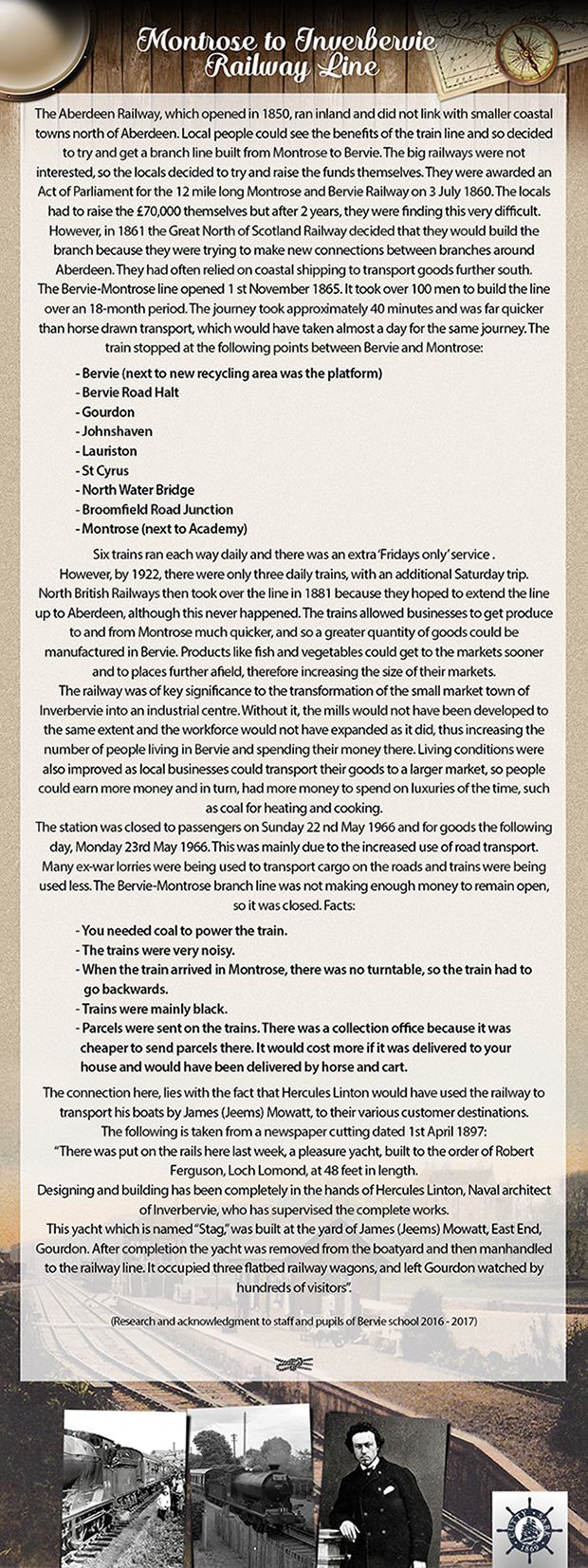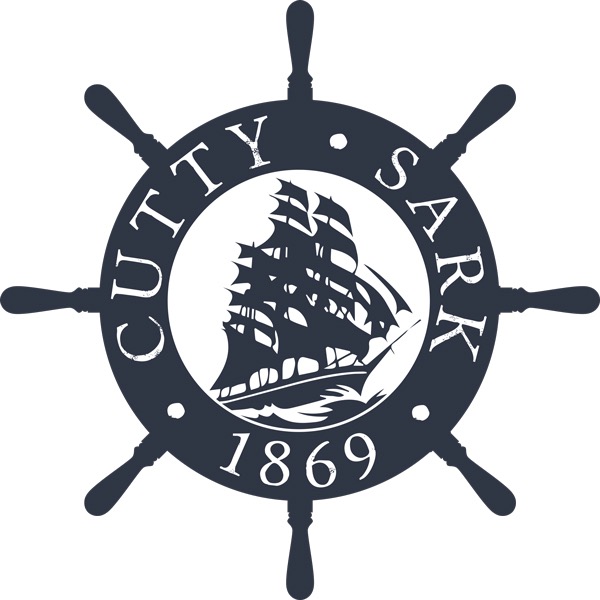Montrose – Inverbervie Railway Line

The Aberdeen Railway, which opened in 1850, ran inland and did not link with smaller coastal towns north of Aberdeen. Local people could see the benefits of the train line and so decided to try and get a branch line built from Montrose to Bervie. The big railways were not interested, so the locals decided to try andraisethefundsthemselves. TheywereawardedanActofParliamentfor the 12 mile long Montrose and Bervie Railway on 3 July 1860. The locals had to raise the £70,000 themselves but after 2 years, they were finding this very difficult.
However, in 1861 the Great North of Scotland Railway decided that they would build the branch because they were trying to make new connections between branches around Aberdeen. They had often relied on coastal shipping to transport goods further south.
The Bervie-Montrose line opened 1s t November 1865. It took over 100 men to build the line over an 18-month period. The journey took approximately 40 minutes and was far quicker than horse drawn transport, which would have taken almost a day for the same journey. The train stopped at the following points between Bervie and Montrose:-
- Bervie (next to new recycling area was the platform)
- Bervie Road Halt
- Gourdon
- Johnshaven
- Lauriston
- St Cyrus
- North Water Bridge
- Broomfield Road Junction
- Montrose (next to Academy) Six trains ran each way daily and there was an extra ‘Fridays only’ service.However, by 1922, there were only three daily trains, with an additional Saturday trip. North British Railways then took over the line in 1881 because they hoped to extend the line up to Aberdeen, although this never happened. The trains allowed businesses to get produce to and from Montrose much quicker, and so a greater quantity of goods could be manufactured in Bervie. Products like fish and vegetables could get to the markets sooner and to places further afield, therefore increasing the size of their markets. The railway was of key significance to the transformation of the small market town of Inverbervie into an industrial centre. Without it, the mills would not have been developed to the same extent and the workforce would not have expanded as it did, thus increasing the number of people living in Bervie and spending their money there. Living conditions were also improved as local businesses could transport their goods to a larger market, so people could earn more money and in turn, had more money to spend on luxuries of the time, such as coal for heating and cooking.
The station was closed to passengers on Sunday 22n d May 1966 and for goods the following day, Monday 23r d May 1966. This was mainly due to the increased use of road transport. Many ex-war lorries were being used to transport cargo on the roads and trains were being used less. The Bervie-Montrose branch line was not making enough money to remain open, so it was closed.
Facts:
- ➢ You needed coal to power the
- ➢ The trains were very
- ➢ When the train arrived in Montrose, there was no turntable, so the train had to go
- ➢ Trains were mainly
- ➢ Parcels were sent on the trains. There was a collection office because it was cheaper to send parcels there. It would cost more if it was delivered to your house and would have been delivered by horse and The connection here, lies with the fact that Hercules Linton would have used the railway to transport his custom – built boats by James (Jeems) Mowatt, to their various customer destinations. (Research and acknowledgement to staff and pupils of Bervie school 2016 – 2017)







